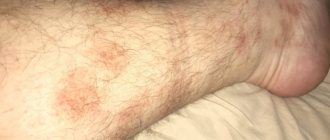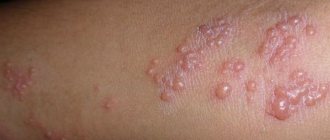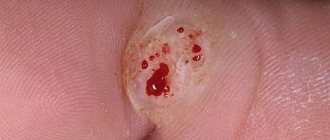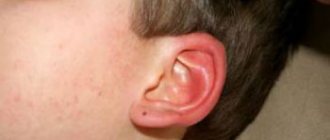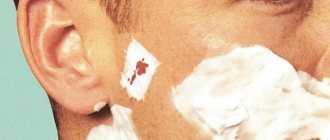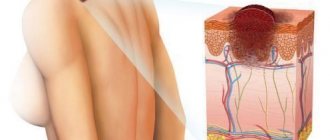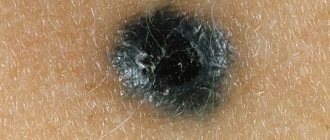Home Eye diseases Pinguecula
Pinguecula of the eye is considered one of the most common benign changes in the eyes. It is a white or yellowish growth in the area of the conjunctiva of the eye and is a consequence of an excess of fats and proteins in the body.
This pathology does not harm human health and does not cause vision impairment, but this does not mean that its occurrence can be ignored.
Causes of growth
A pinguecula is a small and elastic formation that is localized in the area of contact between the cornea and conjunctiva. It is a consequence of hyaline tissue degeneration.
As a rule, a pinguecula appears in the area of the inner edge of the cornea. Moreover, it often develops in both eyes at once.
In most cases, elderly people complain about the occurrence of this pathology. Despite the fact that this disease is very common , people do not often go to doctors.
There is an opinion that prolonged wearing of contact lenses leads to the development of pinguecula. In fact, this is a myth, and no such facts have been established.
Pinguecula is a sign of aging of the conjunctiva, which is why it tends to occur in older people .
In addition to age-related characteristics, occupational factors that constantly have a negative effect on the eyes can lead to the appearance of this pathology. It could be smoke, wind, dust.
Often, the development of pinguecula is favored by a hot and dry climate . Also, the causes of the disease include constant exposure to ultraviolet rays.
That is why this pathology is very often diagnosed in people who spend a long time on the street.
Are you going on vacation? Read how to choose the right sunglasses and protect your eyes from ultraviolet radiation.
Why the eyeballs can hurt when pressed, and how the infection gets from the nose to the eyes can be found out at the link.
There is a bubble on the white of the eye - what is it and how to treat the symptom that has arisen
Sometimes a bubble appears on the white of the eye, what it is is not entirely clear, and they are in no hurry to go to the hospital for advice on treatment for such a small thing.
Meanwhile, such growths are fairly common neoplasms, the origin of which occurs on the mucous membrane of the visual organ.
The appearance of bubbles or other foreign formations in the area of the visual organs is a reason to visit an ophthalmologist. Self-treatment can harm the condition of the eyes.
Bubble formations
Tiny blisters may appear on the mucous membrane of the eye or on the skin of the eyelid. When they are placed on the mucous membrane, serious discomfort can occur; a person experiences quite unpleasant sensations with such formations. The reasons for their occurrence vary and depend on the species.
What are the reasons for the appearance of bubbles on the organs of vision?
Problems with the eyes, expressed in the appearance of formations on their surface, can be caused by a variety of reasons, including:
- A person spends a long time outdoors, exposing his eyes to the rays of the sun;
- Respectable age. In older people, defense mechanisms weaken and processes occurring in the body slow down. The metabolism and absorption of nutrients deteriorates, which provokes an increased susceptibility to disease;
- Features of the profession when people are forced to experience the harmful influence of negative environments for a long time. The risk is considered increased for women and men who spend a lot of time in workshops, in contact with toxic fumes or small particles in the air that can cause mechanical injury;
- Hereditary factor. Such diseases are very difficult to treat; if surgically removed, their recurrence is possible;
- Living in a specific climate, where the constant air temperature is characterized as high, sandstorms often occur.
Adenoviral conjunctivitis
When the mucous membrane of the eyes becomes inflamed during pharyngitis, adenoviral conjunctivitis can occur. It is often accompanied by a significant increase in temperature. One of the manifestations of this kind of disease is the follicular appearance, in which small bubbles with transparent contents grow on the mucous membrane of the eyes.
Conjunctival cysts
Transparent, translucent formations that appear on the eyeballs or on the mucous membrane are conjunctival cysts. They can be either acquired or congenital.
Often such formations occur after eye injury, as well as due to various inflammatory diseases. If they are small in size, cysts may not cause any particular inconvenience.
Symptoms may appear subtle - for example, a feeling of sand in the eyes or excessive flow of tears.
When formed cysts grow in the eyes, pain and a feeling of fullness may appear. Vision may become less sharp. This disease must be treated surgically.
Pinguecula
The formations that form on the eye can be pale yellow or transparent in color. They are based on the apple of the eye itself in the conjunctival area. Their appearance occurs due to excess proteins and fats in the human body. In medical language, such a growth is called a pinguecula.
The occurrence of pinguecula does not harm health and does not impair the quality of vision. However, such a disorder cannot be ignored. If there are epithelial growths on the surface of the eye, it is worth thinking about the fact that this person is beginning to have big problems with the metabolism. Pinguecula is a sign that fatty foods and proteins are absorbed very poorly.
Growths on the surface of the eye may appear when a section of the epithelium degenerates. The cells change their structure, and a compaction is formed from them. The formation, which is benign, is localized on the ocular cornea or conjunctiva. How this or that pinguecula appeared can be judged by its appearance.
Ophthalmoherpes
In this disease, the pathogen becomes active when immunity declines. Signs of ophthalmoherpes are blisters that may appear on the cornea or on the skin of the eyelids. They are filled with a transparent secret.
If a blister bursts, it can infect healthy tissue with its contents. In this case, the disease is aggravated - photophobia, lacrimation and hyperemia of the eyeballs may appear.
If the disease develops to severe forms, blepharospasm appears, characterized by convulsive closure of the eyelids.
Delayed treatment can lead to glaucoma and cataracts. Sometimes blindness occurs.
Allergic phenomena
Cosmetics, various household products and even food can cause the appearance and development of allergies.
This often causes rashes of various types, including sometimes a blister appearing on the white of the eye, causing discomfort. Signs of allergies disappear after the cause of the unpleasant symptoms is identified and eliminated.
To improve results, it is recommended to take a complex of medications with antihistamine action.
If the disease is neglected and treated incorrectly or not treated at all, it can become chronic. This course of eye damage is characterized by severe itching, nettle fever, and manifestations of discomfort.
Papillomas
Infection can occur through contact with carriers of the papilloma virus.
Viruses can be caused by a decrease in human immunity, various stresses, if a person has used antibiotic drugs for a long time, this can also cause the activation of the virus.
To cure papillomas, treatment may be prescribed using medications in the form of complex therapy and surgery.
It is not allowed to remove papillomas on the mucous membranes and eyelids on your own.
What should you do if you notice blisters on your eye?
If strange formations appear on the surface of the eyes, you should act as follows:
- First of all, visit an ophthalmologist. The earlier the diagnosis is made, the better the treatment provided;
- Strict adherence to hygiene standards is required. When washing, you should treat your visual organs as carefully as possible. To wipe your face, the towel must be individual;
- To avoid damage, do not rub your eyes too hard; you cannot remove the formations yourself. This may increase the development of the disease;
- The use of low-quality cosmetics should be avoided;
- If the presence of allergies is noted, it is necessary to exclude the effect of allergens on the body. It will be necessary to work out the food system and, if necessary, eliminate contact with pets.
Is it possible to use traditional methods to get rid of unpleasant symptoms?
There are several most common folk methods that can be used for such diseases. Their effect is that they are able to reduce discomfort several times, relieve burning and itching, and reduce swelling. Ways to get rid of unpleasant sensations can be listed as follows:
- To reduce itching, lotions with solutions of novocaine and menthol are applied to the eyelids;
- The eyes are washed three times a day with a solution of boric acid;
- The use of tea compresses is the most well-known method, characterized by good effectiveness. Tea is considered an excellent antiseptic. To prepare a compress, pour a couple of teaspoons of dry tea leaves into a glass of boiling water. When the resulting liquid has cooled, cotton pads should be soaked in it and placed on the surface of the closed eyes for a few minutes;
- Exactly the same as in the previous version, brew chamomile. Before use, filter the infusion;
- An aqueous one percent solution of propolis is dripped into the affected eye, two drops at a time. This procedure must be carried out eight times a day;
- Compresses, contrasting in temperature - applying a piece of clean cloth soaked in cold water to the eyes, then doing the same, but taking hot water;
- The juice of plants, such as aloe or plantain, is diluted with water in an amount of 1:1. Use the solution obtained in this way for compresses.
It should be understood that by resorting to treatment using traditional methods, you can provoke not the most pleasant consequences for your health. Procedures cannot be performed without first obtaining the approval of an ophthalmologist.
It is forbidden to use ointment medications with a cauterizing effect, do not overcool and stay in a draft for a long time. Those areas where there is a bubble on the white of the eye must be protected from dirt and dust.
Regardless of the reason for the appearance of bubbles, scratching and rubbing them is not allowed. If their integrity is compromised, the naturally created protection against infection is also compromised. There are many reasons why a transparent bubble may appear on the white of the eye; the diagnosis and choice of treatment should be made by a specialist.
Source: https://zrenie.guru/na-belke-glaza-puzyrek-chto-ehto
Symptoms of the disease
Pinguecula is accompanied by the appearance of a growth on the conjunctiva. In addition to this sign, any other severe symptoms are very rare.
However, sometimes an inflammatory process can develop - pingueculitis . It is characterized by the following features:
Redness of the damaged area. Dry eye syndrome. Feeling of a foreign object in the eye. Irritation, scratching - these symptoms most often appear when blinking.
If the pathology is associated with any discomfort or pain, you should immediately contact a qualified ophthalmologist.
Treatment methods for pinguecula
The choice of treatment method is chosen based on the individual characteristics of the human body.
Conservative treatment
In most cases, conservative treatment tactics are used, the main goal of which is to eliminate dry eye syndrome . For this purpose, moisturizing drops can be prescribed - in particular, artificial tears or Oxyal.
These drugs have a lubricating and softening effect. Most of these products contain boric acid, which is a mild preservative. Thanks to this, the drops do not irritate the eyes and do not cause allergies.
If the pinguecula is accompanied by swelling or inflammation, it is advisable to use anti-inflammatory and antibacterial drops.
The most commonly prescribed drugs are:
diclofenac; tobradex; maxitrol.
They are often used as a preventive measure to prevent infections of the conjunctiva.
If the pinguecula is accompanied by irritation, special attention should be paid to treating the disease. During this period, doctors do not recommend wearing contact lenses, as they additionally injure the cornea, which is very undesirable.
Laser removal of pinguecula
Since the pinguecula is a benign formation, there is no urgent need to remove it . And in some situations, such an operation is completely contraindicated - this applies to cases where there is a real threat of visual impairment.
Surgical intervention is usually prescribed when a pinguecula bothers a person or he wants to get rid of an aesthetic defect. In such cases, laser removal of the formation is performed. This procedure is performed quite quickly and painlessly.
After the operation, you need to wear a bandage for a certain period of time. Recovery may take about a month . During this period, redness of the eyes is often observed, but it goes away over time.
Very often, after performing such an operation, a relapse occurs . As a result, the pinguecula forms again, and this happens quite quickly, and it can become even larger.
To prevent this, it is recommended to wear high-quality glasses that provide good UV protection.
Video of surgery to remove pinguecula of the eye
Folk remedies
It is impossible to completely cure pinguecula using traditional medicine. But there are quite a few recipes that have a general strengthening effect on the eyes.
Fresh or dried blueberries. Fresh fruits are consumed with sugar. It is recommended to pre-fill dried berries with water and leave for some time. Blueberries should be consumed on an empty stomach. Single dose – 100 grams.
Freshly squeezed blueberry juice. Excellent for compresses. To do this, you need to strain the juice of the berries, moisten gauze or a swab in it and apply it to your eyes. Leave for fifteen minutes.
Blueberries have a beneficial effect on the condition of the eyes because they contain vitamins C and B, anthocyanins, lactic and succinic acid. Thanks to this, it is possible to reduce eye strain and restore retinal tissue.
Beet. 100 grams of this vegetable should be consumed every morning on an empty stomach - this will prevent the development of pinguecula. You can also make a compress from the crushed tops of this plant - with its help you can relieve irritation and eye strain.
Compresses and baths. These procedures help prevent drying of the mucous membrane. You can use herbal decoctions for this. However, the product must be absolutely transparent and sterile. If plant particles get into your eyes, it may cause additional irritation.
How effective is drug treatment for glaucoma and how to normalize eye pressure. Let's find out right now!
In this article we talk about the causes of stye on the eye.
About allergic conjunctivitis in children, see here https://www.help-eyes.ru/zabolevanie/konyuktivit/knk-allergicheskiy.html
Pignvecula of the eye: its nature and treatment
There are no lipomas directly on the eyeball, because... there is no adipose tissue there. Ocular wen is popularly called pinguecula - defects of the conjunctival membrane, which are convex yellow spots. Pingueculae are considered a sign of age-related changes in the conjunctiva, since they are often found in older people. A factor that provokes the development of pingueculae is regular irritation of the protein membrane with ultraviolet radiation. Those who ignore wearing sunglasses are more likely to develop yellow spots on their eyes.
Most often, the wen is located on the white of the inner edge of the cornea, closer to the bridge of the nose, but it can also appear on other parts of the eyeball. Pingueculae are symmetrical in nature, i.e. develop simultaneously in both eyes.
Wen on the eye, like other types of lipomas, is considered a benign formation and does not require urgent therapeutic measures. But in some cases, the wen can transform into inflammation of the conjunctival membrane with accompanying unpleasant symptoms:
- irritation;
- dryness;
- redness of the protein membrane;
- lacrimation.
If these symptoms manifest themselves, special medications are prescribed. If the wen on the protein is a purely aesthetic problem, you can get rid of it in one day with the help of laser surgery.
When treating pinguecula conservatively, it is important to ensure sufficient hydration of the eye membrane. For this purpose, drugs with a moisturizing and softening effect are prescribed - for example, oxyal (artificial tear). If the pinguecula is aggravated by swelling or inflammation, anti-inflammatory drugs are prescribed - diclofenac, maxitrol, etc.
Prevention
In order to prevent this disease, it is necessary to wear sunglasses , which guarantee reliable protection from the negative effects of ultraviolet radiation. to use wide-brimmed hats for this .
If irritation or inflammation appears at the site of pinguecula formation, you should stop using contact lenses.
In addition, eating raw beets and fresh blueberries is considered an effective preventive measure.
The pinguecula of the eye is a benign formation that does not lead to negative health consequences. This pathology cannot cause deterioration or loss of vision .
If the disease is accompanied by pain, redness of the eyes or other problems, you should definitely consult a qualified ophthalmologist. The specialist will make the correct diagnosis and select the necessary treatment.
Did you like the article? Follow site updates in our VKontakte, Facebook or Google+ groups.
Share this article with your friends on social networks:
A pinguecula is a degenerative, non-tumorous growth that appears on the conjunctiva of the eye (the membrane of the mucous membrane that covers the inside and outside of the eyeball).
The pinguecula looks like a small neoplasm, yellowish in color, slightly raised. As a rule, it grows on the white part of the eye, on the temporal or nasal side of the cornea. The cause is unknown, but constant exposure to sunlight may contribute to the development of the lesion. Often the pinguecula is visible to the naked eye, but the doctor confirms the diagnosis by carefully examining the structure.
Due to the benign nature of the formation, pinguecula rarely requires treatment. Sometimes, however, it can become inflamed, causing irritation and dryness; Your doctor may therefore prescribe an artificial tear and an anti-inflammatory medication to reduce swelling.
Benign neoplasms of the conjunctiva
Benign conjunctival tumors are tumors of the tissue that covers the white of the eye. They can be recognized by a slightly densified and raised area of tissue on the white. Diagnosed by examination using a slit lamp. Although benign growths in this area are rarely malignant, a biopsy is necessary to be completely sure that the tumor is not cancerous.
Types of benign neoplasms of the conjunctiva
Melanoma.
The most common malignant tumor of the conjunctiva. It manifests itself predominantly in middle and adulthood and has a 20% risk of degeneration into a malignant tumor. External signs: a pink or brown nodule on the white part of the eye. Treatment should begin when the tumor is small, because as it grows it can invade other areas of the eyeball and lead to the need for extensive surgery.
Nevus.
A small, flat area consisting of specific cells called melanocytes. In rare cases, it develops into malignant melanoma.
Lymphoma.
A salmon-colored tumor is often a sign of systemic lymphoma. To determine the malignant nature of the tumor, a biopsy is performed. Benign lymphomas also need to be removed.
Cyst.
Any type of thin-walled cavity filled with a liquid or semi-solid substance. Depending on the cause, it can be equally malignant or benign.
Inflammatory tumors.
They develop as a result of the body’s protective reaction to injury, infection or irritation. Removed surgically.
Treatment of conjunctival tumors
Conjunctival tumors are diagnosed during an examination using a slit lamp - biomicroscopy. Most treatment focuses on minimal surgery, since major operations often lead to removal of the eye or loss of vision. Sometimes, if the tumor is not growing, removal is not necessary. In such cases, only observation is carried out. If the tumor lifts or deforms the eyeball, cryotherapy and special eye drops are used.
Symptoms of pinguecula formation
In most people, the first sign of pinguecula is the appearance of a yellowish thickening on the conjunctiva; the formation grows close to the pupil, but the latter, as a rule, does not participate (and in this the pinguecula differs from the pterygium).
Pinguecula are most common on the nasal side of the eye, the area most exposed to sunlight.
Pingueculae, in themselves, are harmless, but include a number of associated symptoms:
Irritation, feeling of a foreign body in the eye; Sometimes inflammation of the conjunctiva; Itching and redness; Dry eye syndrome.
In some cases, the pinguecula swells and becomes inflamed, grows blood vessels, turns red, becomes irritated and has severe symptoms; this condition is called pingueculitis. Irritated, burning, and red eyes are typically the result of exposure to sun, wind, dust, or other conditions that cause extreme eye dryness.
The pinguecula may increase in size over many years. This growth does not affect visual function but may cause eye irritation. In rare cases, the lesion may affect the cornea, causing webbing. If there is a change in size, shape or color, you should consult a doctor for a proper assessment of the condition.
Is this dangerous for a person’s vision and which doctor should I contact?
Pinguecula extremely rarely changes the structure of its cells from a benign etiology to a malignant form of the neoplasm. Still, a certain amount of risk always exists. Based on this, patients who have a genetic predisposition to cancer in their family are recommended to undergo laser removal of the growth, as well as undergo diagnostics of the body to identify metabolic disorders. In general, the pinguecula does not affect the quality of vision, since in most cases it is located too far from the pupil and does not affect the visibility of the visual field.
If you find a foreign growth of yellow or transparent color on the surface of the white of your eyeball, it is recommended to visit an ophthalmologist for advice. The doctor will conduct a visual examination of the organ of vision and, if necessary, write a referral for tests and a comprehensive examination using special medical equipment. Only after this the patient receives a prescription to take conservative medicine medications or is offered to undergo laser removal of a benign tumor.
Benign tumors are the result of abnormal cell growth in a specific part of the body. The tissues of the eye are no exception in this regard; benign tumors are not uncommon in this part of the body. Benign neoplasms are not life-threatening and are not cancerous; in most cases, the prognosis is favorable. However, if blood vessels or nerve endings are pinched, the condition of a patient with a benign tumor may change: pain will appear. Therefore, these tumors require removal.
The growth of a benign tumor may be associated with:
- exposure to toxins;
- the influence of radiation, radiation (for example, due to the treatment of malignant tumors);
- hereditary factors;
- a strict diet poor in nutrients;
- exposure to severe stress;
- local trauma or contusion;
- inflammatory process;
- exposure to infection.
Causes of pinguecula
A pinguecula is formed as a result of a change in the normal tissue of the conjunctiva, which leads to a slight accumulation of proteins, fats and/or calcium. The cause of this change is not entirely clear, but the onset is associated with prolonged exposure to ultraviolet rays and infrared sunlight, as well as factors that contribute to eye irritation, such as dust, wind, or very dry air.
Pinguecula is more common in middle-aged or elderly people, but does not spare young people and children. People who spend a lot of time in the sun without protective glasses or a hat have a higher risk of developing the disorder. Those most at risk are people who work outdoors, including farmers, fishermen and gardeners, as well as those who play outdoor games such as golf. Welding poses a significant occupational hazard.
Pinguecula is often associated with Gaucher disease.
Possible complications
The pinguecula can lead to the formation of a pterygium . These two diseases have very similar characteristics, but doctors consider them to be separate diseases.
A pterygium is a wedge-shaped growth that grows on the conjunctiva of the sclera and penetrates the cornea, while the pinguecula, as a rule, does not include the corneal area. The lesion associated with pterygium is benign (not cancerous) but contains blood vessels and scar tissue. If it grows excessively in size or thickness, it can impair vision: a large enough pterygium can cause distortion of the corneal surface, resulting in astigmatism.
The development of pterygium, like pingueculae, is favored by prolonged exposure to ultraviolet rays of the sun.
Treatment of pinguecula
Pinguecula usually do not require any treatment unless they cause severe enough symptoms. A conservative approach is recommended for most patients: artificial tears can relieve dry and irritated eyes, and temporary use of steroid eye drops may be helpful in reducing inflammation.
When these growths become large enough to interfere with vision or cause ongoing discomfort. In these cases, the pinguecula can be removed surgically.
Surgery is considered necessary when the pinguecula:
Penetrates the cornea; Causes extreme discomfort when trying to wear contact lenses; Persistent and severe inflammation, even after using eye drops or ointments.
Sometimes, pingueculae are removed for aesthetic reasons.
The operation can be performed on an outpatient basis under local anesthesia. Recovery typically takes several weeks and involves the use of eye drops or ointments. Surgery, as a rule, does not lead to complications, but pinguecula are prone to relapse.
The best way to avoid recurrence of pinguecula after treatment is to limit exposure to environmental factors that stimulate its growth (such as exposure to sunlight, irritants, and dusty environments).
For dry eye conditions, using artificial tears and decongestant eye drops can prevent swelling and irritation.
A pinguecula is a yellowish formation observed on the white of the eyeball. It usually appears on the side closest to the nose.
Return to content
Diseases that can cause blisters to appear on the eyes
Adenoviral conjunctivitis
When the mucous membrane of the eyes becomes inflamed during pharyngitis, adenoviral conjunctivitis can occur. It is often accompanied by a significant increase in temperature. One of the manifestations of this kind of disease is the follicular appearance, in which small bubbles with transparent contents grow on the mucous membrane of the eyes.
Conjunctival cysts
Transparent, translucent formations that appear on the eyeballs or on the mucous membrane are conjunctival cysts. They can be either acquired or congenital. Often such formations occur after eye injury, as well as due to various inflammatory diseases. If they are small in size, cysts may not cause any particular inconvenience. Symptoms may appear subtle - for example, a feeling of sand in the eyes or excessive flow of tears.
When formed cysts grow in the eyes, pain and a feeling of fullness may appear. Vision may become less sharp. This disease must be treated surgically.
Pinguecula
The formations that form on the eye can be pale yellow or transparent in color. They are based on the apple of the eye itself in the conjunctival area. Their appearance occurs due to excess proteins and fats in the human body. In medical language, such a growth is called a pinguecula.
Description of the disease
Pinguecula is a fairly common benign eye disease. It appears as a whitish or yellowish growth on the surface of the conjunctiva of the eye. If the growth has formed only on the white membrane of the eye, it is called a pinguecula, and if it forms a wing-like structure located on the cornea, it is called a pterygium.
The pinguecula is not a tumor. It is only a change in eye tissue due to excessive accumulation of fats and proteins in the body and, as a rule, does not affect the cornea. The disease can become a symptom of chronic irritation of the organ of vision or a reaction to sunlight.
Many people fear that a seemingly harmless growth can develop into a malignant one. In reality, pinguecula do not pose a serious danger to humans and do not lead to loss of vision. Most pingueculae grow slowly and rarely cause serious problems.
Return to content
Neoplasms of the choroid, retina, and ciliary body
Tumors of the choroid, retina, ciliary body:
- Melanoma (choroidal, iris, atrial melanoma).
- Meningiomas.
- Nevi and cysts of the iris, choroid.
- Tumors of the optic nerve and various parts of the orbit.
Melanoma
Formed on the iris and choroid, ciliary body or retina. Choroidal melanomas are the most common; about 6 million cases of such tumors are registered annually. Iris melanomas appear as small, dark spots on the colored part of the eye. The prognosis is favorable. The size of such melanoma is 3 mm or more.
Symptoms:
spot on the iris, blurred vision, distortion of the shape of the pupil, cataracts, increased eye pressure.
Treatment:
in the absence of growth - observation; in case of active growth, surgical removal; in severe cases, enucleation (removal of the eyeball) is necessary.
Such melanomas are well differentiated and rarely degenerate into malignant ones, however, under unfavorable conditions and aggressive growth, an unfavorable prognosis cannot be ruled out.
Atrial melanomas form in patients over 60 years of age and contribute to retinal detachment, subluxation of the lens, and widening of the anterior part of the sclera.
Nevi and iris cysts
Optic nerve tumors
Gliomas and meningiomas are the main types of optic nerve tumors.
Symptoms: gradual, painless deterioration of vision, in rare cases - bleeding leading to sudden loss of vision, children may develop strabismus, exophthalmos is possible, weak pupillary reaction to light, loss of color perception, limited movement of the eyeballs. Treatment of gliomas and meningiomas is usually surgical, especially when they grow rapidly.
Melanoma
- another type of benign eye tumor.
Symptoms: compression of the arteries, ischemia, tissue necrosis, decreased visual acuity. Treatment: watchful waiting and observation if there is no growth, removal if there is active growth.
Based on materials:
Copyright © 2005 VisionRx LLC. All Rights Reserved. 2015 Canadian Cancer Society © EMIS Group plc. Registered in England and Wales. ©2005-2015 WebMD, LLC.
A tubercle that appears on the white of the eye is called a pinguecula, and a triangular-shaped hymen formation on the cornea is called a pterygium. Both diseases are benign eye changes. White or yellowish growths on the whites are a common disease mainly among older people, indicating aging of the conjunctiva. There are cases of pinguecula developing into pterygium. Pinguecula most often occurs in two eyes at the same time. The white growth on the eye is painless, does not lead to loss or deterioration of vision, and only causes aesthetic discomfort. Pterygium, growing on the pupil, can provoke loss of visual function.
Growths on the eyes can significantly affect the quality of vision and cause discomfort.
Causes
Prolonged exposure to the sun can cause illness
The causes of pingueculae are currently not fully understood, but it is known that prolonged exposure to infrared and ultraviolet waves present in sunlight can lead to their formation. Some irritating factors: wind, dust also provoke the growth of pinguecula.
People who spend a lot of time in the open sun have a much higher risk of contracting the disease.
Return to content
Treatment
Artificial tears will help get rid of the feeling of a foreign body in the eye
Treatment of pinguecula in most cases is carried out using a conservative method. Thus, artificial tears help relieve or even remove the sensation of a foreign body in the eye. Sometimes the affected area of the visual organ becomes inflamed. In this case, optical decongestants or anti-inflammatory drugs are used.
Removal of the pinguecula is only possible through surgery, but it is not always effective and safe. Even with the modern level of development of medicine, the relapse rate sometimes reaches 60%. When the growth causes significant inconvenience, surgery is strictly prohibited, since it can harm the proper functioning of the eye.
The surgery is usually performed in a hospital setting under local anesthesia. As a rule, the patient does not feel anything. The rehabilitation course is several weeks. To speed up healing, it is recommended to use eye drops or ointments. During the initial stage of treatment, the eye may appear slightly swollen or red, but this will subside over time.
Return to content
And a little about secrets...
Have you ever suffered from problems with your EYES? Judging by the fact that you are reading this article, victory was not on your side. And of course you are still looking for a good way to improve your vision
back to normal.
Then read what Elena Malysheva says about this in her interview about effective ways to restore vision.
Wen can appear on any part of the body where there is adipose tissue. It is also present on the thin skin of the eyelids, so wen can be located there too. As a rule, eye lipomas appear as small yellowish pimples in the periorbital area (on the upper or lower eyelid or in the corners of the eyes). Such neoplasms are called milia.
Treatment with folk remedies
Blueberries are very useful for eye diseases
To get rid of pinguecula, you can turn to the experience of our grandparents for help. Traditional medicine will help in the fight against this disease. There are no special recipes for the treatment of pinguecula, but you can use ordinary general restoratives.
It is recommended to eat fresh blueberries. For sweetness, they can be rubbed with sugar. The disease is prevented by taking 100 g of raw beets every day. It is better to do this on an empty stomach. Return to content
